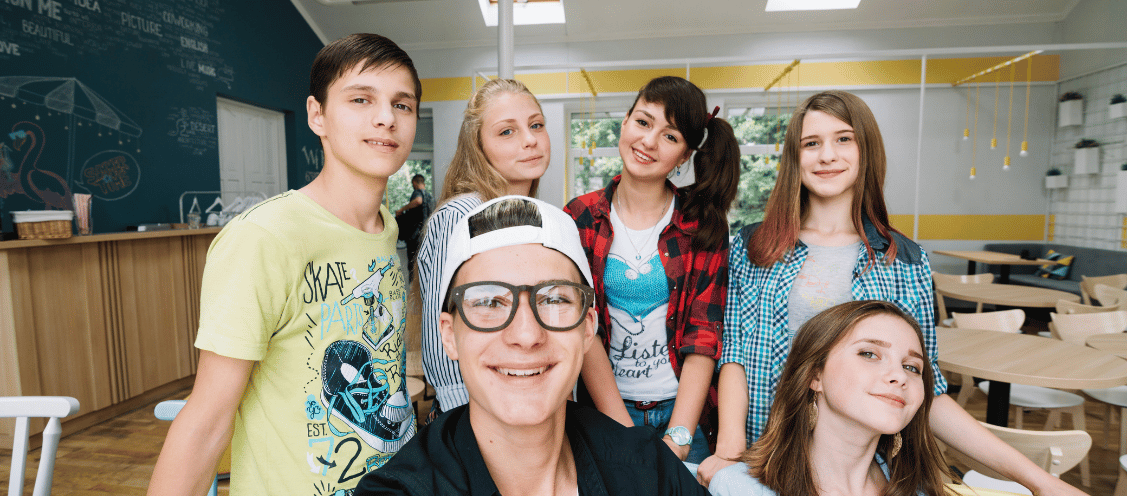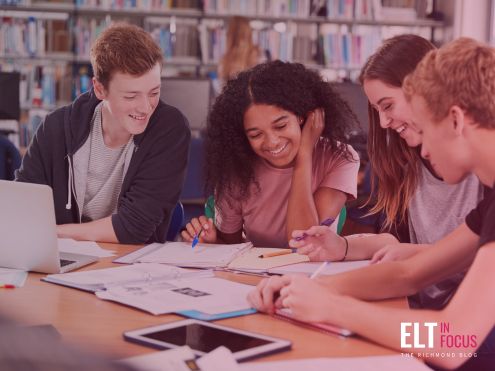Managing classes with teens
Teenagers are often labelled as defiant, rebellious, and out of control. However, teens are also thoughtful, curious, and energetic, and if we can position ourselves as their ally and guide, teaching them can be a rewarding experience. When teachers can create an engaging environment where teens feel valued and empowered to explore their interests, it becomes easier to guide them through academic and personal growth. Flexibility, empathy, and a good sense of humor are essential tools for navigating the ever-changing landscape of teenage minds, fostering a collaborative and supportive atmosphere where learning becomes an exciting adventure for both teacher and student.
Classroom management defined: A classroom needs to be a safe and comfortable space where learners can practise their English. There needs to be organisation, so that tasks work properly and information flows clearly. There also needs to be respect, with the teacher and students listening to each other, and students listening to other students. Classroom management is the role that we the teacher play in influencing these things and establishing our vision of how the class should work.
Keeping things in perspective: While the effectiveness of our classroom management may ultimately put a limit on how much learning can take place, we need to remember that order in the classroom is not the same thing as learning. The fact that a classroom of teens is sitting quietly does not guarantee that their English is improving, less so if they are intimidated by their teacher.
As teacher, it's nice to feel we are in control but we don't want to get carried away. Classroom management is a means to an end, not an end in itself. In fact, I like to think of it as the minimum amount of order needed for us to be able to work and our students to be able to learn.
One of the things that will help our learners' English improve is actually speaking it. So some level of noise is regularly necessary. To go a little further, in a communicative classroom where we hope that students are speaking not only to the teacher but also to each other, quite a lot of noise is necessary. This is something that we sometimes struggle to get colleagues who teach content subjects that don't include speaking practice to understand.
Another way to help facilitate learning is to slightly adapt tasks for individuals or groups, with different students working on different things but in the same class at the same time. This is the opposite of working in lockstep where we all proceed together as one. Lockstep works sometimes, but not all the time. Again though, if we want to have a certain level of flexibility, and allow our learners some freedom, then a little bit of 'controlled chaos' will also be necessary.
The role the students play: If we dig a little further, we find that order in a classroom actually comes from our learners making small decisions themselves that benefit the collective. That could be the decision to stop talking to their partner and turn to look at the teacher because they have realised we want to give additional instructions. It could be the decision to let a classmate who hasn't cottoned on to this know. It could be the decision to start a task, or to encourage a reticent peer to have a go. In an online setting, it could be the decision to turn their camera on or to quit the game of Genshin Impact or Roblox that they are playing on split screen and take part in the breakout room activity you have set up for them.
Really, classroom management is an act of collaboration between the teacher and the learners. You can only do so much. In the end, your learners have to cede you that order and sense of control.
The value of positive regard: What will make learners want to collaborate with their teacher? The first step, I believe, is making sure that they know you genuinely have their best interests at heart and do not see them as 'the enemy' or an obstacle to you having a happy day. This is sometimes harder than it sounds if your class is not behaving as well as you'd like.
The important thing is that they know, even if you are struggling with them in the moment or getting a bit annoyed with a certain individual on a certain day, that deep down you don't harbour any animosity and that you don't hold long-standing grudges. That way, even students who have misbehaved, or mmisbehaved regularly by making less than perfect decisions, know that they always have a way back into your good graces.
Being explicit and articulate issues: What is obvious to a teacher may not be obvious to their adolescent learners. Therefore, it's not enough to look annoyed or give a student 'that look' and expect them to read your mind. Being specific and telling them exactly what it is you want them to do (and what it is you don't want them to do) on a task is much more effective. It's also more effective if done at the start of a lesson or activity before anyone's made any mistakes - before you are irritated and before they are defensive. I often like to start my lessons, especially with younger teens or tweens by recapitulating what we did well in the last lesson as well as what we could try to work on this lesson.
Try to work with individuals: If a student feels that you notice them (in a good way) they are more likely to try to behave well for you. Similarly, if they feel you will hold them personally accountable for their behaviour they will be more prone to check themselves and self-regulate. I am not talking about singling out and picking on individuals, rather, objectively noting who is doing what and talking with those people about specifics and most importantly, how to move forward.
If you are already in the habit of giving learners positive individual attention as part and parcel of your lessons – talking with them during speaking activities, inviting students to your table to read you something, show you something or discuss their progress while the rest are working independently – then this will feel much more natural.
One thing I do strongly recommend against is standing in front of a class and telling them off as a group for the decisions that perhaps only one, two or three students are making. That can quickly create a class versus teacher-standoff situation.
Run on the system not your emotions: Getting frustrated with students who misbehave happens to us all and it's nothing to be embarrassed or ashamed of. At the same time, it's not what will fix our problems. We can explain the rules of our institution and the possible consequences of misbehaviour, such as the next step in our disciplinary procedure if things need escalating, without needing to reinforce that conversation with anger. Most effective classroom management can be done while smiling.
Giving them space to make us proud: At the end of the day, we are trying to highlight to individuals where we think they can make better decisions. Once we have done that, we sometimes need to step back and give them space in which to make those choices to turn their conduct around. That involves a certain amount of dialogue, collaboration and faith.
When we as teachers take time to thoughtfully reflect on and implement classroom management strategies that support our teens, it won't be long until we see them thriving and enjoying a higher level of success. Mindfully shaping the classroom environment to suit our teens’ specific needs is a sure way to a positive experience for our students and ourselves.
Further reading:
Roland C (2021) Understanding Teenage Language Learners Online. Shoreham-On-Sea: Pavilion Publishing & Media
Roland C (2018) Understanding Teenagers in the ELT Classroom. Shoreham-On-Sea: Pavilion Publishing & Media
Roland C (2013) Let's talk about discipline. English Teaching Professional 89 pp 4-6
Further viewing: https://www.youtube.com/@teachingteenagersenglish/videos









